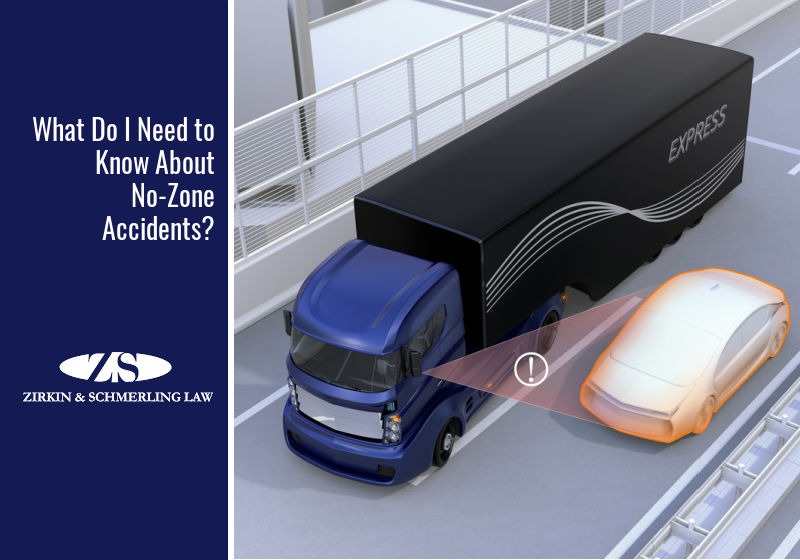
Accidents involving large semi-trucks can be especially dangerous. Large trucks’ size and weight make their damage potential very high. Certain no-zone areas surrounding trucks can be the cause behind certain accidents. No-zone areas refer to the blind spots surrounding a truck and its trailer, where the truck driver’s visibility is either partially obstructed or completely blocked due to the sheer size of the truck.
As many as 413,000 truck accidents each year in the U.S. are caused by truck blind spots, according to the U.S. Department of Transportation. Even though blind spots make it more difficult to safely handle a large truck, drivers are still responsible for checking their blind spots, and all automobile drivers must still drive and operate their vehicles as safely as possible to minimize no-zone accidents.
Blind spots on commercial trucks
Large semis typically have four main areas that contain blind spots. Due to trucks’ large size, blinds spots occur regardless of the driver’s height. For any driver, there will be spots with limited or no visibility, including:
Directly in front of the truck’s cabin
As far as 20 feet in front of a truck’s cabin, visibility can be limited or blocked entirely due to the cabin’s height. Even a tall driver who naturally has a higher vantage point will not be able to see cars or objects directly in front of the cabin.
It is very important for safety that other vehicles do not merge or drive directly in front of a large semi-truck. Leaving adequate space between your car and the front of the semi will allow for visibility.
Behind the truck’s trailer
Visibility can be completely blocked as far back as 30 feet behind the truck’s trailer. This is why it’s essential not to drive too closely behind a truck. While trucks typically require more space and time to come to a stop, a truck that has to stop suddenly can be dangerous for cars located behind it if they’re following too closely.
Automobiles can even slide under trucks from behind, resulting in an incredibly dangerous and potentially damaging situation. Keep an appropriate distance away from a truck when one is in front.
The sides of the truck
Drivers of automobiles usually areable to completely see the sides of their vehicles using their side mirrors. However, this isn’t the case for trucks. While big trucks and 18 wheeler’s often have various blind spot mirrors to enhance visibility, their sheer size can prevent total visibility.
Therefore, it’s important to be cautious when riding directly parallel to trucks. The truck driver might not be able to see your vehicle when it’s directly beside or near the truck.
Liability and no-zone accidents
Truck drivers are still responsible for checking their blind spots and for being aware of other cars’ locations on the road. A truck should not change lanes, make a turn, or merge into traffic without being aware of other vehicles and their locations.
Proving liability in a no-zone accident can be more difficult since, by nature of blind spots, truck drivers cannot properly see other vehicles, and other drivers are expected to be cautious and safe when driving within or passing through no-zone boundaries.
In a no-zone accident case, both the automobile driver’s and truck driver’s behavior and handling of their vehicles can come into question. Automobiles must not tailgate or drive recklessly when near trucks. Truck drivers also must remain aware of surrounding vehicles and provide adequate space for all maneuvers.
Our truck accident attorneys want to hear about your case
With hundreds of people injured in accidents involving semi-trucks in Maryland each year, it’s important to contact legal experts who know how to handle such cases and who can hold negligent truck drivers responsible.
Zirkin & Schmerling truck accident attorneys can help to investigate the details of a no-zone accident and to get to the bottom of proving who was at fault. If you or a loved one are the victim of a semi-truck accident, contact Zirkin & Schmerling Law at 410-753-4611 or schedule your free consultation with us online today.
